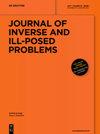Accelerating regional weather forecasting by super-resolution and data-driven methods
IF 0.9
4区 数学
Q2 MATHEMATICS
引用次数: 0
Abstract
At present, computationally intensive numerical weather prediction systems based on physics equations are widely used for short-term weather forecasting. In this paper, we investigate the potential of accelerating the Weather Research and Forecasting (WRF-ARW) model using machine learning techniques. Two main approaches are considered. First, we assess the viability of complete replacing the numerical weather model with deep learning models, capable of predicting the full range forecast directly from basic initial data. Second, we consider a “super-resolution” technique involving low-resolution WRF computation and a machine learning based downscaling using coarse-grid forecast for conditioning. The process of downscaling is intrinsically an ill-posed problem. In both categories, several prominent and promising machine learning methods are evaluated and compared on real data from a variety of sources. for the Moscow region Namely, in addition to the ground truth WRF forecasts that were utilized for training, we compare the model predictions against ERA5 reanalysis and measurements from local weather stations. We show that deep learning approaches can be successfully applied to accelerate a numerical model and even produce more realistic forecasts in other aspects. As a practical outcome, this study offers empirically validated guidance for the selection and application of deep learning methods to accelerate the computation of detailed short-term atmospheric forecasts tailored to specific needs.通过超分辨率和数据驱动方法加速区域天气预报
目前,基于物理方程的计算密集型数值天气预报系统被广泛用于短期天气预报。在本文中,我们研究了利用机器学习技术加速天气研究和预报(WRF-ARW)模型的潜力。本文考虑了两种主要方法。首先,我们评估了用深度学习模型完全取代数值天气模型的可行性,这种模型能够直接从基本的初始数据预测全方位的预报。其次,我们考虑了一种 "超分辨率 "技术,涉及低分辨率 WRF 计算和基于机器学习的降尺度,使用粗网格预报进行调节。降尺度过程本质上是一个难题。在这两类方法中,我们利用各种来源的真实数据对几种著名的、有前途的机器学习方法进行了评估和比较。 也就是说,除了用于训练的 WRF 地面实况预报外,我们还将模型预测与ERA5 再分析和当地气象站的测量结果进行了比较。我们表明,深度学习方法可成功用于加速数值模式,甚至在其他方面产生更真实的预报。作为一项实际成果,本研究为选择和应用深度学习方法提供了经验验证指导,以加速计算符合特定需求的详细短期大气预报。
本文章由计算机程序翻译,如有差异,请以英文原文为准。
求助全文
约1分钟内获得全文
求助全文
来源期刊

Journal of Inverse and Ill-Posed Problems
MATHEMATICS, APPLIED-MATHEMATICS
CiteScore
2.60
自引率
9.10%
发文量
48
审稿时长
>12 weeks
期刊介绍:
This journal aims to present original articles on the theory, numerics and applications of inverse and ill-posed problems. These inverse and ill-posed problems arise in mathematical physics and mathematical analysis, geophysics, acoustics, electrodynamics, tomography, medicine, ecology, financial mathematics etc. Articles on the construction and justification of new numerical algorithms of inverse problem solutions are also published.
Issues of the Journal of Inverse and Ill-Posed Problems contain high quality papers which have an innovative approach and topical interest.
The following topics are covered:
Inverse problems
existence and uniqueness theorems
stability estimates
optimization and identification problems
numerical methods
Ill-posed problems
regularization theory
operator equations
integral geometry
Applications
inverse problems in geophysics, electrodynamics and acoustics
inverse problems in ecology
inverse and ill-posed problems in medicine
mathematical problems of tomography
 求助内容:
求助内容: 应助结果提醒方式:
应助结果提醒方式:


